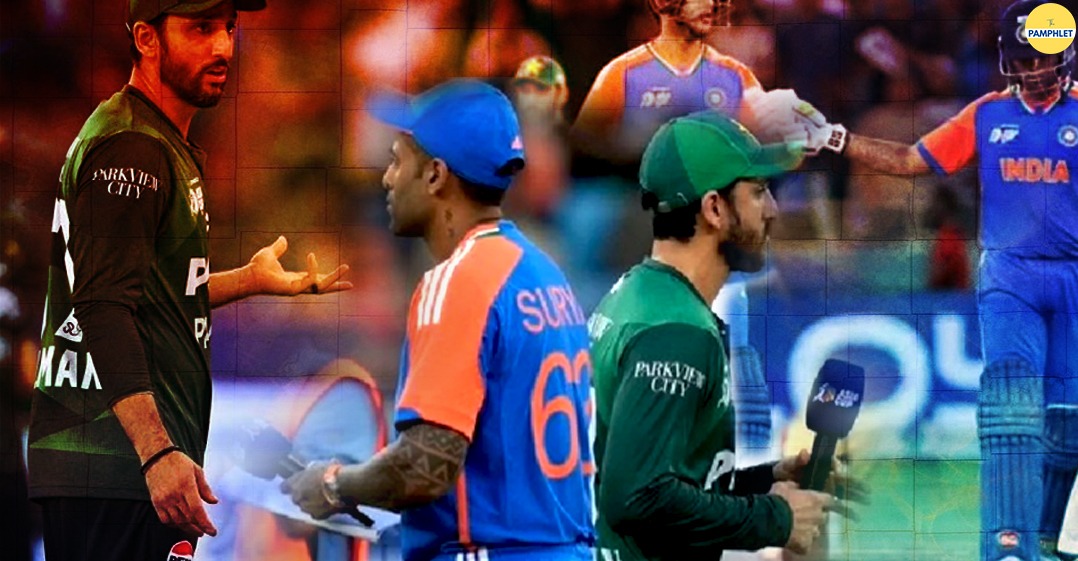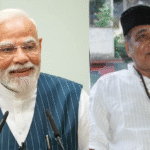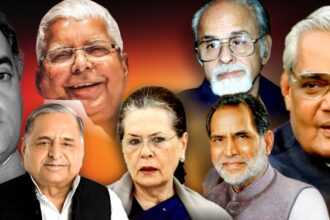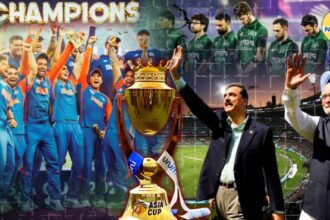Staying on the crease with Pakistan at the Asia Cup in Dubai, the Indian men’s squad and the BCCI crossed the moral and proverbial “Lakshman rekha”. They have emerged winners but “all out”. Champions are not always made by staying on the crease. Indian champions are carved out of those who reject the opportunity to make Pakistan worthy of a contest, particularly when they have strategic advantage — both as Indian squad and Indians in India-dominated sport.
Champions are tailored from the courage to say “no” for the Indian Armed Forces, who said a big, bold, determined “yes” to Operation Sindoor. Champions know when to withdraw. Champions know when to protest. Champions know when to decline. Those who don’t are and will remain “players” with the privilege of wearing the Indian jersey. Indian hockey has been fortunate to have several such men – on and off the field (turf) and I have been fortunate to witness the courage closely over reportage and as a hockey fan.
Hopefully, the cricket team will realise that skipping handshakes or slipping into the dressing room after winning the match that should not have happened in the first place, is barely heroic. It does not undo the damage the officialdom has mounted on the squad or the squad has brought to itself by losing the respect of the average Indian spectator. Well, this is not the first time that the two Indian entities have missed the chance to reject playing against Pakistan. Reasons to say “no” have been several and solid. And several have been missed, carefully missed.
A simple search on this website dedicated to cricket coverage reveals the number of times India had the chance to reject the contest against Pakistan. At least 20 times between the 1970s – the decade known for the Indo-Pak war and the exile of Kashmiris in the 1990s, nearly 17 times between 1991 and 1999 – the year of ICC world cup which was being played while the Kargil War was on, and 15 times between the 1999 – marked by the Kargil War — and 2009 — a year after the Mumbai terror attacks. In 2011, Pakistan was stripped of its hosting rights for the ICC World Cup hosted in the Indian Subcontinent owing to the terror attack on the Sri Lankan squad on Pakistani soil in 2009!
For India, the chance to deny the contest stood wasted 10 times between 2009 and 2019 — the year of the Pulwama attack. Moving further, between 2019 and 2025, five times. Indian cricket spectators forgive and forget too easily and fill stadiums too quickly. Perhaps the BCCI and its squads at different times have been aware of the spectators’ generosity. This is set to change in 2025, it seems, as of now.
Cricket is a game of several myths. Cricket is India’s heartbeat (“Indians ke dil ki dhadkan”) – is one such myth. The BCCI stands with Pahalgam victims — another. Cricket wins hearts – yet another. Cricket is an emotion – another. The biggest myth about cricket, however, is that it is “just a game” or “just a sport”. It is “just a sport” as much as Shahid Afridi is “just a cricketer” and Pakistan a “just a nation”. A big chunk of relevance of Indian cricket comes from India’s clashes with Pakistan. Yet, the squad has failed to read the big room from its little bubble — the dressing room.
Cricket has sadly become the Indian self-esteem project, tossed about on foreign pitches, so that Pakistan can have the chance to count itself in the Indian subcontinent while keeping Pakistanis distracted from failed governance and ill-effects of interference in Kashmir. It provides Pakistan the shoulder to latch on to for global relevance in cricket. Then, it is severely dependent on individual idiosyncrasies of players and collective disasters of squads – that go beyond defeats and performance. One such tragedy that triggered a massive controversy occurred when the Indian cricket team took the knee in 2021 for Black Lives Matter, before a game against Pakistan.
Yet, in India, cricket tends to bulldoze on itself the mighty nationalist expression of the common people, who find it a handy tool to mount that one opportunity to stand for India or cheer for India, because they have been conditioned for it. Or – it could be because they have learned that this is the best they can do for the nation – through a show of loyalty to a sport that is played widely and has become synonymous with India.
The best thing about myths is that they often do the easy and necessary work of erasing, undoing and destroying themselves in the light of truth. The biggest myth about cricket has been that it is “just a game” or “just a sport”. Cricket is India’s heartbeat (“Indians ke dilon ki dhadkan”) – is one myth. The BCCI stands with Pahalgam victims — is another. Cricket wins hearts – yet another. Cricket is an emotion – one more myth. The BCCI’s decision to play Pakistan at the ongoing Asia Cup in Dubai — despite the rousing opposition from spectators across India who believed and believe that India should have denied to entertain the Pakistani squad — has given an impression that Indian cricket is subservient to Pakistan.
The fuss about Indian cricketers not shaking hands with Pakistanis doesn’t only add to the nuisance value the sport brings to a nation of immense talent in several sporting disciplines, but also points to the aggression from Pakistani cricketers that Indian cricket is exposed to.
Cricket is “just a sport” as much as Shahid Afridi is “just a cricketer” and Pakistan a “just a nation”. Several spectators, journalists and politicians among them, rightly angered by the Indian squad’s motivation to give Pakistan the privilege of contest, have pointed that India has gifted the Pakistani Cricket Board dual advantage. The first advantage is that the Pakistan Cricket Board (PCB) is set to earn approximately USD 10 million, according to reports. This amount will come to the PCB as profit — by simply hosting the Champions Trophy. Reports further state how PCB uses funds from the ICC to renovate and improve cricket infrastructure in Pakistan. This is a decent display of how disconnected from India’s stature, India’s needs, and Indians who watch cricket, is Indian cricket.
Lesser followed sport in India is progressing and winning despite the exaggerated popularity of cricket in India, and despite the lack of audience the disciplines and athletes deserve and get. This is owing to the consistent efforts of the Modi government, the unflinching dedication of athletes, performance-focussed policy making, and coordinated efforts of the sports ministry and sports associations. The results are encouraging (and a topic close to my heart, to be expanded later, another day).
Recently, the Indian men’s hockey squad — playing on a powerful and young squad — won the Asia Cup beating the tough South Korea. In the media, which is the first point of public perspective-building on the sport after the players and spectators, themselves, the celebration of this victory was overshadowed by the outrage and noise surrounding the Indian squad while it was showing no signs of boycotting Pakistan. Next, on the day when India really did play the disgraceful match in cricket against Pakistan in Dubai, and spectators across India were expressing their outrage, women in lesser-followed sports — hockey and boxing emerged victorious. They were celebrated by the limited audience and communities of fans who celebrate hockey and boxing.
Indian women boxers registered their best-ever performance on the global stage. Boxers Minakshi Hooda and Jaismine Lamboria won gold medals, Nupur clinched silver, Pooja Rani bagged the bronze at the World Boxing Championship. On the same day, In China, the much awaited Asia Cup of women’s hockey saw the Indian squad fighting to edge out China, but standing as the second best in the continent. That’s not all, on the same day, India rolled its way to a historic bronze medal at the Speed Skating World Championship with Anandkumar Velkumar sprinting ahead in a sport dominated by Europeans and East Asians. The victory rally in tennis unfolded on the same day — when India beat Switzerland to qualify for the 2026 Davis Cup.
There is no coincidence in victory and efforts just as there is no coincidence in lesser popular sports rising above all odds, and displaying diligence, courage, sporting character and resilience in the global arena. The timing of the above-mentioned victories in boxing, hockey, tennis, skating, however, is more than meaningful. Lesser-followed sports are screaming for support, cheering, audience, attention and appreciation. They are compelling India, nudging spectators to understand the difference in privilege and provocation, to re-calibrate loyalty to India and Indian sport.
Some politicians and supporters of cricket on social media have defended the Indian cricket team for their inability to sidestep compulsions to play Pakistan. One of them was even seen asking social media users if Indians would outrage in the same manner in the case of a javelin champion in the constant scenario of a Pakistani being his arch rival. Illogical conflation is the best defence for cowardice. While it is good to see Indian cricket spectators take a stand that goes against the interests of the squad, consistency in being unforgiving and not forgetting cricket-induced cultural tragedies would be better. This is the right time and the best time to re-calibrate loyalty to and through sport. The moment is appropriate and apt to let Indian cricketers know how champs are made and unmade.






